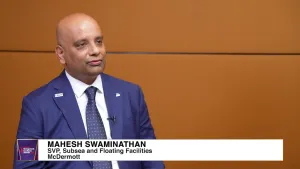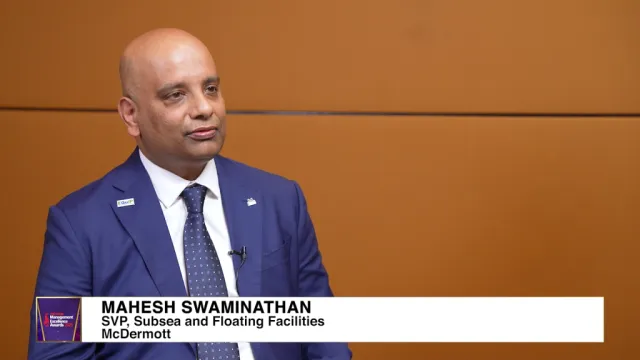
Content excellence coupled with long-term shareholder value creation are at the core of broadcasting – Kearney’s Sarovar Agarwal
He emphasised that industry players must critically focus on economic viability, given the fundamental challenges faced right now, across geographies.
The broadcasting industry in Asia-Pacific has irrevocably pivoted from legacy, linear models to digital. This transition has created both opportunities and challenges, with companies navigating evolving audience behaviours, economic pressures, and regulatory complexities. As global media giants continue to shape the landscape, local broadcasters must adapt swiftly to remain competitive.
Sarovar Agarwal is a Partner with Kearney based in Australia, and the Asia Pacific Lead for Kearney’s Communications, Media, and Technology Practice. He has advised CEOs and CXOs of incumbent and challenger media and telecom companies for over 20 years, on strategic and operational transformation topics. Sarovar is frequently cited in the media for his insights on key trends and future direction of the sector.
As a judge at the Asia-Pacific Broadcasting+ Awards 2025, Agarwal highlights the need to balance innovation, economic viability, customer experience, and long-term sustainability to drive industry resilience and growth.
With the broadcasting industry evolving rapidly, what are the key factors shaping its transformation across the Asia-Pacific region?
The Asia-Pacific broadcasting industry is mirroring the global trend, as the pivot from legacy linear to digital has become mainstream. This has led to significant disruption, as seen in Kearney’s NextGen Video Disruption Index, and economic viability challenges for most countries in the region. Whilst some legacy TV companies have successfully transitioned their business models to compete and participate in the digital viewing world, others are still in early stages. The challenge is further exacerbated in the Asia-Pacific market, with no regional or global at-scale broadcast players (beyond the US broadcast and global OTT majors)—this makes the fight for survival much tougher. Video piracy and associated regulatory action are another material driver of industry performance, especially in Southeast Asia. Broadcast advertising sales continue to struggle and haven’t yet seen the expected bounce backs post-COVID.
As the audience viewing habits continue to shift, how can broadcasting companies adapt their strategies to stay relevant and competitive?
Audiences across the region are increasingly being hit by an omnipresent content tsunami, and they are struggling to navigate, select, and engage with the extensive range of content available across platforms and mediums. More scripted series and movies, more services being offered for consumer engagement, and more diversification into adjacencies by global majors make the choice even harder. Our view is that there is an untapped opportunity for a digital super-aggregator play across most markets to become the content navigator platform of choice for audiences. Kearney’s research indicates that viewers are willing to even pay money for platforms and tools that can help simplify and curate this journey. And this will be a critical driver of future success for those in the media ecosystem that are able to deliver on this promise.
Audience interest and engagement in sports and live sports content continue to be a significant driver of growth for the sector, notwithstanding the points above. And companies that are getting this right (coupled with the right sports rights deals) will continue to weather the storm better than others.
In what ways can broadcasters leverage emerging technologies and innovation to enhance content delivery, audience engagement, and operational efficiency?
Technology and innovation are at the heart of delivering incredible audience experiences for the broadcast sector, and advancements in video quality, concurrency/latency, and AI are paving the way for improved engagement. However, these also mean additional economic pressure - we recommend a cautionary stance for the broadcasting sector on new investments and a pragmatic lens to AI, being a fast follower rather than a true innovator. Having said that, the media industry is proving to be one of the sectors with early viable AI use cases, particularly for post-production—including dubbing, captioning, and subtitling, all rapidly becoming mainstream with clear business cases.
On audience engagement, companies are increasingly pushing the boundaries for multi-platform models that go beyond plain video content to in-stadium/event/fan experiences, gaming, AR/VR, addressable advertising, and even betting (in sports). This diversification is primarily being driven by the global media majors, and local players should look for ways to participate.
On operational efficiency, we recommend a ‘zero-based everything’ (ZBB+) approach to resetting the economics of broadcast players. This extends beyond classic zero-based budgeting to zero-based operations, zero-based organisation, and zero-based content. Companies must (re)assess every role, process/activity, person, system, and video asset and question how this drives engagement and profitability—if it’s not growing audience and/or lifting advertising revenue, then it should consider being removed. The ZBB+ mindset operates at three layers: rationalisation (do only what’s needed), optimisation (do efficiently), and transformation (do differently).
With rising concerns about misinformation, how can broadcasters uphold content credibility and promote responsible media practices?
Content credibility and promoting responsible media practices are core tenets of the broadcasting industry and are adequately governed by in-country regulatory and legal requirements. The media sector can most materially affect and influence culture, beliefs, and behaviours for society and should consider this unbiased social obligation as companies formulate their approach and strategy.
Further, the rapid rise in fake news and misinformation on digital content platforms, with resulting audience and advertiser wariness, is an opportunity for broadcasters to take the high ground, focussing on credibility and trust rather than chasing ratings at any cost. This can pay off through higher ratings and CPMs.
Looking ahead, what emerging trends do you foresee having the greatest impact on the future of broadcasting in the Asia-Pacific region?
M&A and partnerships to pick up: The recent decision by DAZN to invest in Foxtel in Australia is a clear signal of increased interest in the Asia-Pacific broadcast sector by global players, and this may pave the way for more such deals, which provide local companies with global content, technology, and funding—and potential regional consolidation. Partnerships between traditionally old broadcasting sector adversaries to drive improved market outcomes and economics will also grow. We hope that industry participants can keep egos aside and realise that it is better to be successful together rather than face an existential threat. Continued economic challenges will further bolster this trend.
The clash between local players and global giants over regulatory issues is set to continue: Multiple governments and countries continue to deal with issues such as hyperscaler advertising dominance, local news/content promotion, and piracy. And there doesn’t seem to be any straightforward answers, with each market adopting different pathways based on bargaining.
Continued growth of vertical viewing, whilst linear sustains: Linear content continues to be a material share of the overall viewing basket in Asia Pacific, despite all the doomsday prophecies. We don’t see this changing, but broadcasters will have to urgently think through what role they want to play in the vertical viewing ecosystem, which is being dominated by global brands like YouTube, TikTok, and Meta.
As a judge at the Asia-Pacific Broadcasting+ Awards 2025, what are the key criteria that you will be using when evaluating the nominees?
I will look at evaluating nominees from three lenses, given the crossroads the sector faces today in the Asia-Pacific— balance between innovation and economic viability, balance between customer proposition and simplification, and balance between near-term success and long-term sustainability.



















 Advertise
Advertise









